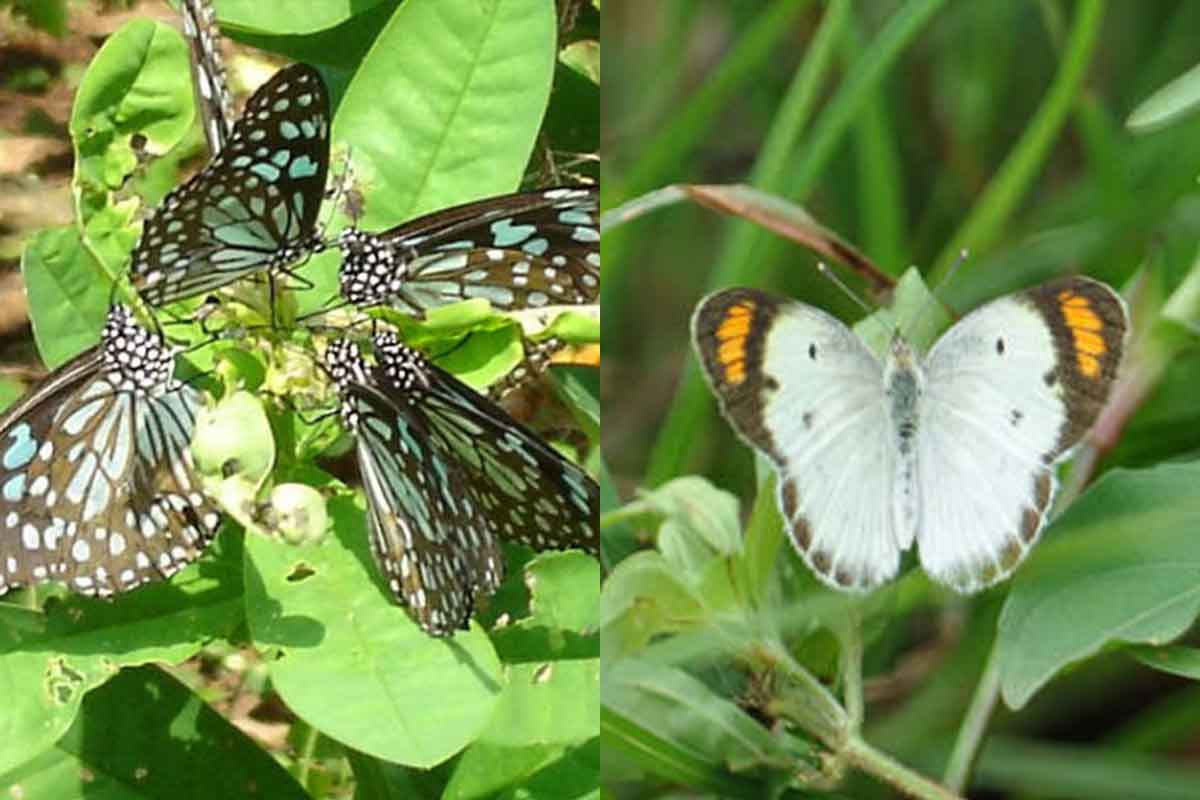

Butterflies, being the most beautifully crafted winged creatures, are considered to be the “Jewels of the Sky”. Being the central pollinators for many crops, and plants, their importance in the ecosystem is highly underrated. Owing to their beauty, they are often used ornamentally for human pleasure. In an unfair world for butterflies, researchers, non-profit organisations and conservationists thrive to conserve them. One such organisation is the Dolphin Nature Conservation Society (DNCS), working towards studying and conserving butterflies for 20 years in Vizag.
Over their two decades of research, DNCS has recorded a total of 125 different species of butterflies, of which 43 were reported for the first time in Vizag. The newly recorded species include Tiny Grass Blue, Striped Albatross, and the Striped Blue Crow among others. The butterfly population in Vizag also includes 20 scheduled species, which have the protected status under the Wildlife Protection Act, 1972.
Sharing some intriguing behaviour of butterflies, Dr. Rama Murty, Founder and President of DNCS and Biodiversity Park in Vizag, got in a conversation with Yo! Vizag. He said that butterflies feed on a very diverse platter, ranging from nectar and pollen of flowers to a glass of wine, as well as minerals from wet soil. “If observed carefully, butterflies exhibit interesting behaviours like basking in the sun to gain energy, camouflage to dodge predators and mimicry of other butterflies which are not palatable to birds,” informed Mr Murthy.
In Vizag, there are several studies being conducted to observe the migratory and clustering behaviour of butterfly species. Usually, to dodge the relentless Southwest monsoons, butterflies migrate to the tolerable rains of Southeast India, from the months of April to June. The butterflies breed during the Southwest monsoons on the Eastern Ghat forests and plains. They move back to the Western Ghats before the onset of Northeast monsoons. Subsequently, their progeny migrate back to the Western Ghats during October and December. “Expecting this behaviour to happen soon, observation and research activities of such species are set in place by our team at DNCS”, said Dr Rama Murthy.
Currently, at the Biodiversity Park of Vizag, the life cycles of a variety of butterflies, such as Crows, Tigers, Crimson Rose, Common Mormon, Lime Butterfly, Tailed Jay, and the Common Jay, are being studied.
Today, these precious beings are faced with threats like butterfly farming, habitat loss, illegal trade, and many more. Mr Murthy urges butterfly watchers, non-profit organisations, students, and forest officials to work in synchrony for the conservation of these natural beauties.
The search for new activities and experiences never ends. It's undoubtedly exciting to have one's…
The death of an 11-year-old girl near a church in Kancharapalem, Visakhapatnam, on the night…
Visakhapatnam district is set to see a major new development aimed at empowering the differently-abled…
A gruesome double murder in Rajeev Nagar, Ward 86, Visakhapatnam, was reported on 26 April…
For one born in Vizag or any Telugu city, there comes a time after primary…
As the weekend approaches, the yearning for rest and relaxation grows. With summer temperatures soaring,…
Leave a Comment